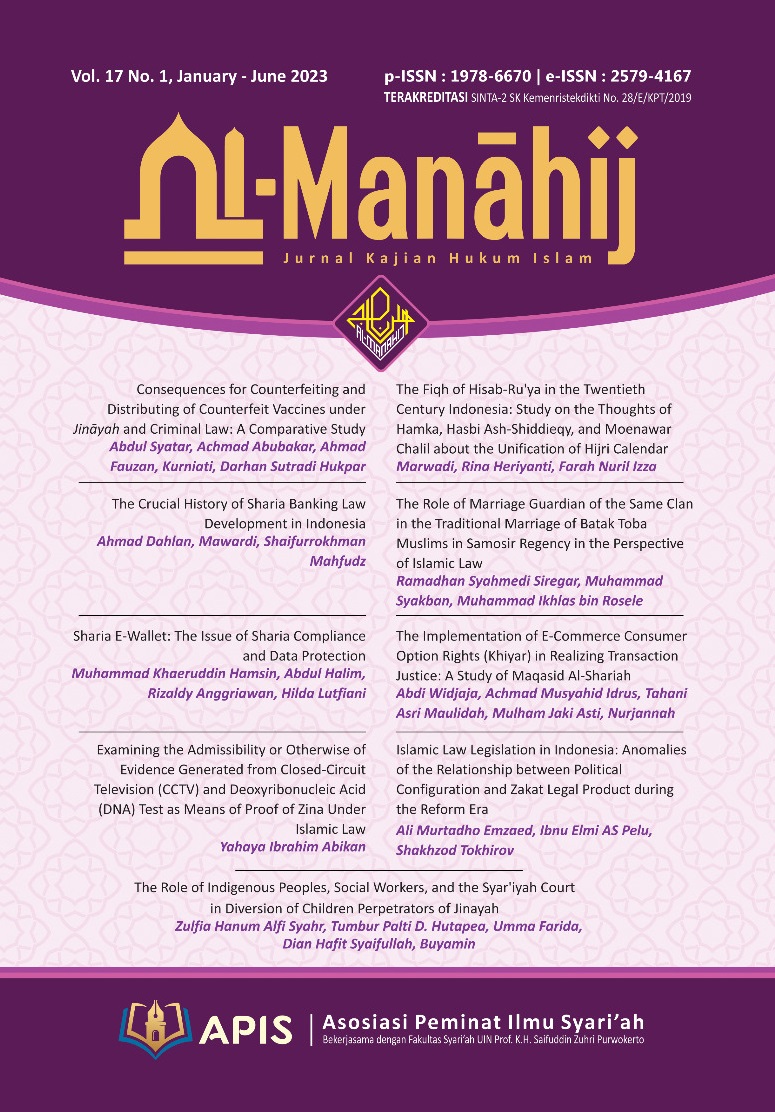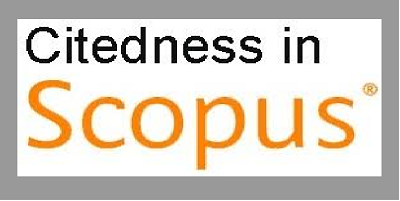The Role of Indigenous Peoples, Social Workers, and the Syar’iyah Court in Diversion of Children Perpetrators of Jinayah
DOI:
https://doi.org/10.24090/mnh.v17i1.7349Keywords:
children, court, diversion, Jinayah, indigenous peopleAbstract
The juvenile justice system as a legal efforcement to guarantee the rights of children who conflict with the law. The mechanism for the criminal justice system against children is carried out through diversion involving judicial officials. However, problems arise in enforcing the criminal justice system for children engaged in Jinayah cases. It is because the Jinayah case must obey the qanun implemented in Aceh. The punishment given to the perpetrators of Jinayah can be in the form of flogging or imprisonment. For a child, that punishment can be traumatic for the child’s mental health. Therefore, this research will examine various efforts to minimize the impact of this punishment on the psychological development of children who become perpetrators of Jinayah. The problem of this study is how a child can maintain his psychological health after becoming a perpetrator of Jinayah. This research is essential to protect children’s psychological development as perpetrators of Jinayah. The purpose of this study is to find various efforts to maintain the mental development of children as perpetrators of Jinayah. Thus, the research method used to answer these problems is qualitative with a normative approach and literature study. The normative research will analyze various legal regulations regarding criminal and Jinayah acts. Then, it will support a literature study to gain a comprehensive and depth understanding of the topic of study. The results are that children as perpetrators of Jinayah have a risk of psychological trauma, and juvenile criminal law needs to be strengthened. Strengthening this law can be in the form of harmonizing the diversion of children with the Jinayah law. The cooperation of various parties, namely, law enforcement officials, social workers, and indigenous peoples, can minimize the risk of child psychological trauma.References
Alputila, MJ, MA Tajuddin, and Kahar. “Diversion Approach as an Alternative Case Resolution Son of the Conflict with the Law on Child Criminal Justice System ( Case Study of Merauke ).” In ICROEST, 1–8, 2019.
Analiyansyah, and Syarifah Rahmatillah. “Perlindungan Terhadap Anak Yang Berhadapan Dengan Hukum (Studi Terhadap Undang-Undang Peradilan Anak Indonesia Dan Peradilan Adat Aceh).” Gender Equality: Internasional Journal of Child and Gender Studies 1, no. 1 (2015): 51–68.
Arthur, Raymond. “Recognising Children ’ s Citizenship in the Youth Justice System.” Journal of Social Welfare and Family Law 37, no. 1 (2015): 21–37.
Collins, Tara M., and Laura H.V. Wright. “The Challenges for Children’s Rights in International Child Protection: Opportunities for Transformation.” World Development 159 (2022): 106032. https://doi.org/10.1016/j.worlddev.2022.106032.
Efendi, Sumardi. “Tinjauan Yuridis Terhadap Jarīmah Zina Oleh Anak Di Bawah Umur Menurut Hukum Positif Dan Fiqh Jinayah.” Jurnal Syarah 8, no. 1 (2019): 115–136.
Fadhilah. “Tindak Pidana Pelecehan Seksual Oleh Anak Di Bawah Umur Menurut UU No. 35 Tahun 2015 (Kajian Kasus Di Mahkamah Syar’iyah).” Syariah Journal of Islamic Law 2, no. 2 (2020): 88–119.
Hamdi, Syaibatul, M. Ikhwan M. Ikhwan, and Iskandar Iskandar. “Tinjauan Hukum Islam Terhadap Implementasi Restorative Justice Dalam Sistem Peradilan Pidana Anak Di Indonesia.” Maqasidi: Jurnal Syariah dan Hukum 1, no. 1 (2021): 74.
Ikhsan, Muhammad. “Peran Dan Aksi Tuha Peut Gampong Dalam Pendampingan Anak Yang Berhadapan Dengan Hukum Di Kabupaten Aceh Utara.” Journal of Islamic Communication and Media Studies 1, no. 1 (2021): 38–52.
Jr, Eltimar T Castro, and Alexander A Hernandez. “Developing a Predictive Model on Assessing Children in Conflict with the Law and Children at Risk : A Case in the Philippines.” In IEEE 15th International Colloquium on Signal Processing & Its Applications (CSPA), 243–248. IEEE, 2019.
Khairani. “Mekanisme Penanganan Anak Pelanggar Qanun Jinayat Tentang Khalwat Dan Ikhtilat.” Gender Equality: International Journal of Child and Gender Studies 4, no. 1 (2018): 1–22.
Khalidi, Muhadi, and Arifin Abdullah. “Dayah Dan Rehabilitasi Akhlak Pelaku Jarimah: Perspektif Qanun Aceh Nomor 6 Tahun 2014.” Legitimasi: Jurnal Hukum Pidana dan Politik Hukum 11, no. 1 (2022): 65.
Mansari, and Ahmad Fikri Oslami. “Uqubat Terhadap Jarimah Zina Yang Melibatkan Anak.” Jurnal Yudisial 14, no. 3 (2021): 375–393.
Munandar. “Kedudukan Anak Sebagai Jinayah Dalam Qanun Aceh Nomor 6 Tahun 2014 Tentang Hukum Jinayah.” Syiah Kuala Law Journal (2017): 226.
Muthalib, Salman Abdul. “Analisis Kepentingan Terbaik Bagi Anak Dalam Hukum Jinayat.” Al-Mashlahah: Jurnal Hukum Islam dan Pranata Sosial Islam (2021): 416.
Paul, Binoy, and Victor Paul. “Factors Of Reintegration Of Children In Conflict With Law.” Journal of Dharma 1, no. March (2020): 105–124.
Putra, Assyafiq Anugrah. “Penyelarasan Diversi Dalam Sistem Peradilan Pidana Anak Dan Penerapannya Pada Hukum Jinayat Di Aceh.” Jakarta, 2022.
Rahmawati, Atik, and Wahyuni Mayangsari. “Peran Pekerja Sosial Koreksional Dalam Rehabilitasi Dan Reintegrasi Sosial Anak Berhadapan Dengan Hukum Di LKSA Bengkel Jiwa Kabupaten Jember.” Rehsos: Jurnal Ilmiah Rehabilitasi Sosial 4, no. 1 (2022).
Rahmi, Isnatul, and Rizanizarli. “Penerapan Restorative Justice Dalam Penyelesaian Tindak Pidana Pencurian Oleh Anak Dalam Perspektif Adat Aceh.” Syiah Kuala Law Journal 4, no. April (2020): 11–20.
Rawanda, Lubna, and Mohammad Idrees. “Issues and Problems Faced by Children in Conflict with Law during and after Their Detention.” Sri Lanka Journal of Social Sciences 44, no. 2 (2021): 213–226.
Rochaeti, Nur, and Nurul Muthia. “Socio-Legal Study of Community Participation in Restorative Justice of Children in Conflict with the Law in Indonesia.” International Journal of Criminology and Sociology 10 (2021): 293–298.
Rochaeti, Nur, and Pujiyono Pujiyono. “Implementation Study of Restorative Justice for Juvenile Criminal Justice System by Customary Court in Mainland Sulawesi.” In IOP Conference Series: Earth and Environmental Science, 156:0–7, 2018.
Shah, Malika Galib. “Children of Conflict: An Analysis of the Jammu and Kashmir Juvenile Justice (Care and Protection of Children) Act, 2013.” Indian Law Review 4, no. 1 (2020): 105–119. https://doi.org/10.1080/24730580.2019.1703490.
Sibaran, Timor Fero, and Aditya Gumelar Sobri. “Analisis Penegakan Hukum Terhadap Pelaku Tindak Pidana Pencabulan Ditinjau Dari Perspektif Hak Asasi Manusia (HAM).” Journal of Muslim Societies 4, no. 1 (2022): 29–37.
Snehil, Gupta, and Rajesh Sagar. “Juvenile Justice System , Juvenile Mental Health , and the Role of MHPs : Challenges and Opportunities.” Indian Psychiatric Society 42 (2020): 304–310.
Downloads
Published
How to Cite
Issue
Section
License
Copyright (c) 2023 Zulfia Hanum Alfi Syahr, Tumbur Palti D. Hutapea, Umma Farida, Dian Hafit Syaifullah, Buyamin

This work is licensed under a Creative Commons Attribution-ShareAlike 4.0 International License.
Authors who publish with this journal agree to the following terms:
- Authors retain copyright and grant the journal right of first publication with the work simultaneously licensed under a Creative Commons Attribution License that allows others to share the work with an acknowledgement of the work's authorship and initial publication in this journal.
- Authors are able to enter into separate, additional contractual arrangements for the non-exclusive distribution of the journal's published version of the work (e.g., post it to an institutional repository or publish it in a book), with an acknowledgement of its initial publication in this journal.
- Authors are permitted and encouraged to post their work online (e.g., in institutional repositories or on their website) prior to and during the submission process, as it can lead to productive exchanges, as well as earlier and greater citation of published work (See The Effect of Open Access).


















